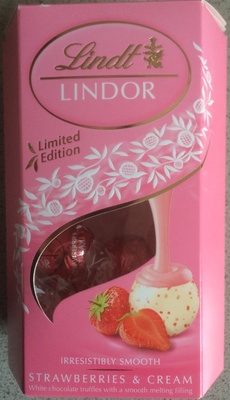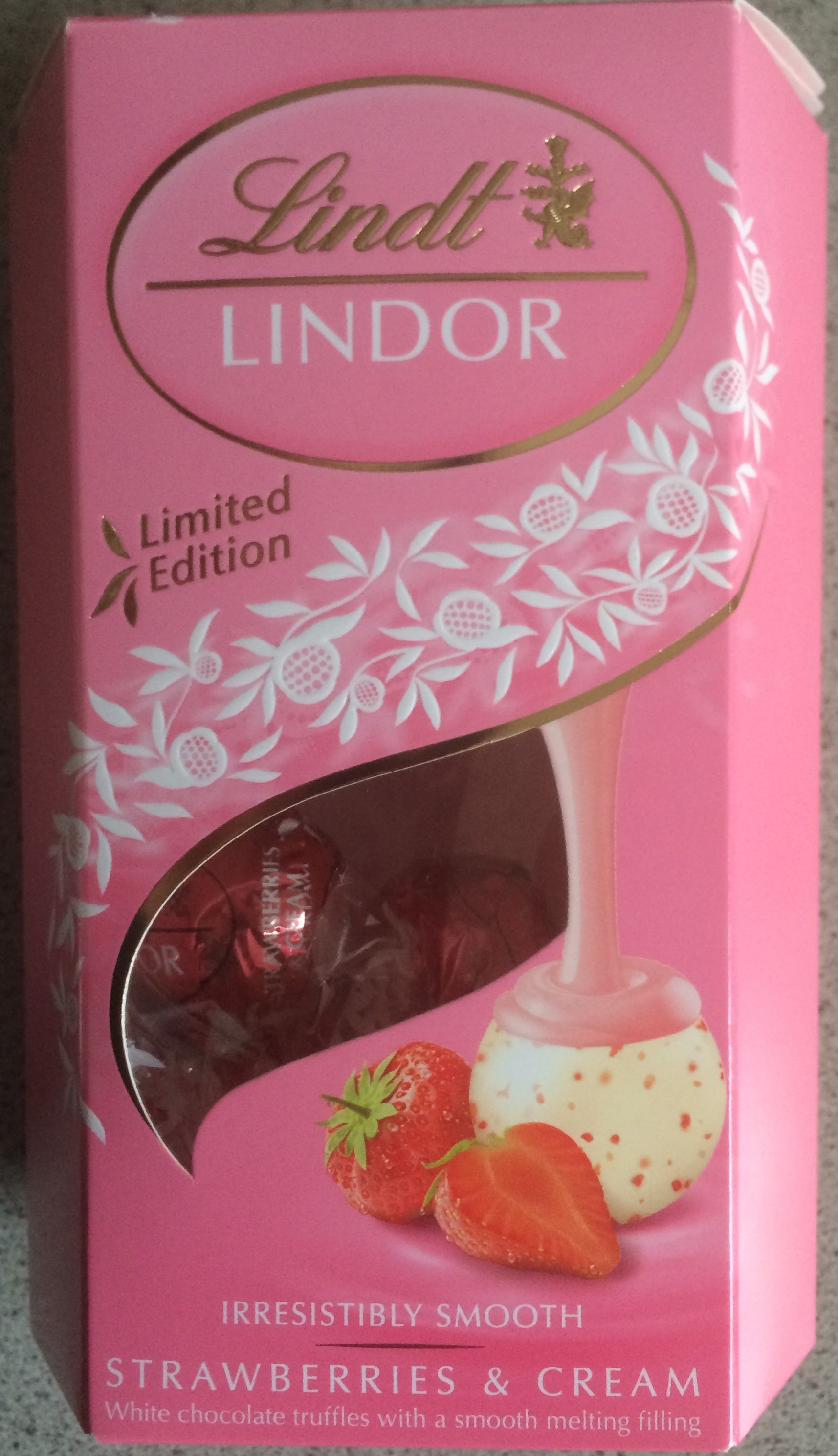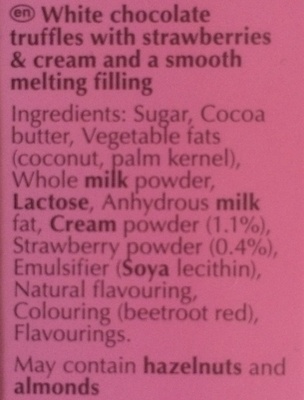Strawberries and cream truffles - Lindt - 200 g
This product page is not complete. You can help to complete it by editing it and adding more data from the photos we have, or by taking more photos using the app for Android or iPhone/iPad. Thank you!
×
Barcode: 8003340097619 (EAN / EAN-13)
Ainm coitianta: Chocolates
Quantity: 200 g
Packaging: en:Box, en:Card-box, en:Paper with plastic window, en:Stück
Brandaí: Lindt, Lindt & Sprüngli, Lindor
Catagóirí: en:Snacks, en:Sweet snacks, en:Cocoa and its products, en:Confectioneries, en:Chocolate candies, en:Bonbons
Manufacturing or processing places: Italy
Link to the product page on the official site of the producer: http://www.lindt.co.uk/shop/lindor-straw...
Country: An Ostair, An Bhulgáir, An Ríocht Aontaithe
Matching with your preferences
Environment
Packaging
Transportation
Threatened species
Report a problem
Data sources
Product added on ag frogman
Last edit of product page on ag inf.
Product page also edited by date-limite-app, moon-rabbit, packbot, parukhin, roto, swipe-studio, telperion87.










